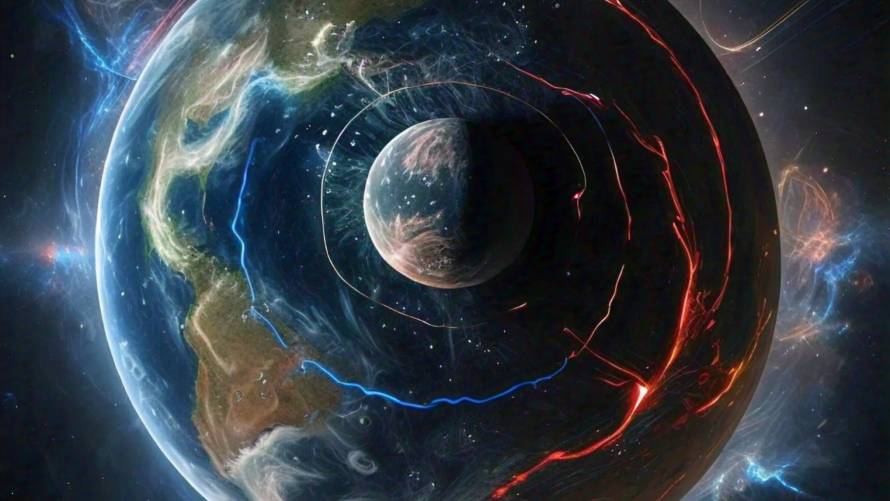The Earth’s magnetic field, which protects our planet from harmful cosmic radiation and charged particles from the sun, is not as stable as it may seem. According to new research, the field’s intensity can significantly decrease during events called magnetic field excursions, leaving Earth more vulnerable to space weather.
Magnetic Field Excursions: A Glimpse into Earth’s Past
Sanja Panovska, a researcher at GFZ Potsdam, Germany, has been studying the Laschamps excursion, a period around 41,000 years ago when the Earth’s magnetic field intensity dropped dramatically. During this time, the usual north and south magnetic poles were replaced by multiple poles, and the field’s strength waned, allowing more cosmic rays to reach Earth’s surface.
Cosmogenic Radionuclides: Indicators of Cosmic Ray Bombardment
To determine when Earth experienced higher levels of cosmic radiation, scientists measure cosmogenic radionuclides in ice and marine sediment cores. These isotopes, such as beryllium-10, are produced when cosmic rays interact with Earth’s atmosphere. Panovska found that during the Laschamps excursion, the average production rate of beryllium-10 was twice as high as it is today, suggesting a significantly weaker magnetic field.
Reconstructing the Geomagnetic Field: Insights into Earth’s Past and Future
By combining data from cosmogenic radionuclides and paleomagnetic records, Panovska reconstructed the geomagnetic field during the Laschamps excursion. Her findings show that the magnetosphere, the region around Earth influenced by its magnetic field, shrank dramatically during this period, reducing the planet’s protection against cosmic radiation.
“Understanding these extreme events is important for their occurrence in the future, space climate predictions, and assessing the effects on the environment and on the Earth system,” Panovska said.
Panovska will present her findings at the European Geosciences Union (EGU) General Assembly 2024 on Friday, April 19, during session EMRP3.3.

